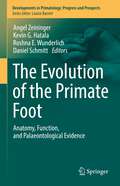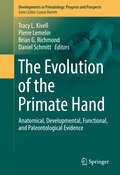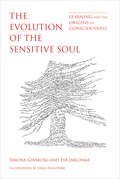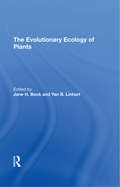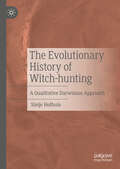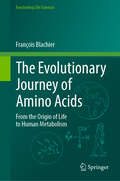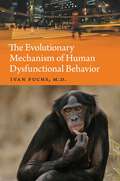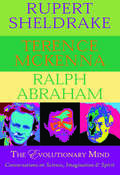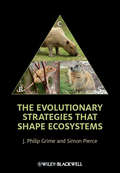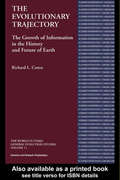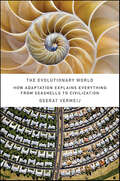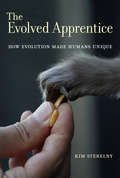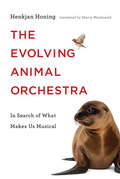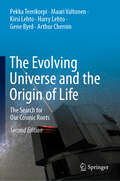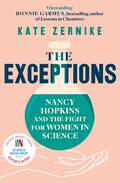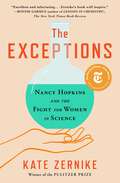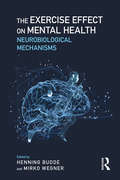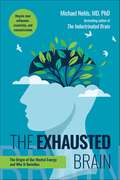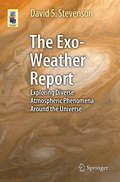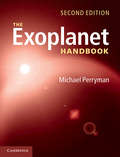- Table View
- List View
The Evolution of the Primate Foot: Anatomy, Function, and Palaeontological Evidence (Developments in Primatology: Progress and Prospects)
by Daniel Schmitt Angel Zeininger Kevin G. Hatala Roshna E. WunderlichThe human foot is a unique and defining characteristic of our anatomy. Most primates have grasping, prehensile feet, whereas the human foot stands out as a powerful non-grasping propulsive lever that is central to our evolution as adept bipedal walkers and runners and defines our lineage. Very few books have compiled and evaluated key research on the primate foot and provided a perspective on what we know and what we still need to know. This book serves as an essential companion to “The Evolution of the Primate Hand” volume, also in the Developments in Primatology series. This book includes chapters written by experts in the field of morphology and mechanics of the primate foot, the role of the foot in different aspects of primate locomotion (including but not limited to human bipedalism), the “hard evidence” of primate foot evolution including fossil foot bones and fossil footprints, and the relevance of our foot’s evolutionary history to modern human foot pathology.This volume addresses three fundamental questions: (1) What makes the human foot so different from that of other primates? (2) How does the anatomy, biomechanics, and ecological context of the foot and foot use differ among primates and why? (3) how did foot anatomy and function change throughout primate and human evolution, and why is this evolutionary history relevant in clinical contexts today?This co-edited volume, which relies on the insights of leading scholars in primate foot anatomy and evolution provides for the first time a comprehensive review and scholarly discussion of the primate foot from multiple perspectives. It is accessible to readers at different levels of inquiry (e.g., undergraduate/graduate students, postdoctoral research, other scholars outside of biological anthropology). This volume provides an all-in‐one resource for research on the comparative and functional morphology and evolution of the primate foot.
The Evolution of the Primate Hand
by Tracy L. Kivell Pierre Lemelin Brian G. Richmond Daniel SchmittThis book demonstrates how the primate hand combines both primitive and novel morphology, both general function with specialization, and both a remarkable degree of diversity within some clades and yet general similarity across many others. Across the chapters, different authors have addressed a variety of specific questions and provided their perspectives, but all explore the main themes described above to provide an overarching "primitive primate hand" thread to the book. Each chapter provides an in-depth review and critical account of the available literature, a balanced interpretation of the evidence from a variety of perspectives, and prospects for future research questions. In order to make this a useful resource for researchers at all levels, the basic structure of each chapter is the same, so that information can be easily consulted from chapter to chapter. An extensive reference list is provided at the end of each chapter so the reader has additional resources to address more specific questions or to find specific data.
The Evolution of the Sensitive Soul: Learning and the Origins of Consciousness (The\mit Press Ser.)
by Eva Jablonka Simona GinsburgA new theory about the origins of consciousness that finds learning to be the driving force in the evolutionary transition to basic consciousness.What marked the evolutionary transition from organisms that lacked consciousness to those with consciousness—to minimal subjective experiencing, or, as Aristotle described it, “the sensitive soul”? In this book, Simona Ginsburg and Eva Jablonka propose a new theory about the origin of consciousness that finds learning to be the driving force in the transition to basic consciousness. Using a methodology similar to that used by scientists when they identified the transition from non-life to life, Ginsburg and Jablonka suggest a set of criteria, identify a marker for the transition to minimal consciousness, and explore the far-reaching biological, psychological, and philosophical implications.After presenting the historical, neurobiological, and philosophical foundations of their analysis, Ginsburg and Jablonka propose that the evolutionary marker of basic or minimal consciousness is a complex form of associative learning, which they term unlimited associative learning (UAL). UAL enables an organism to ascribe motivational value to a novel, compound, non-reflex-inducing stimulus or action, and use it as the basis for future learning. Associative learning, Ginsburg and Jablonka argue, drove the Cambrian explosion and its massive diversification of organisms. Finally, Ginsburg and Jablonka propose symbolic language as a similar type of marker for the evolutionary transition to human rationality—to Aristotle's “rational soul.”
The Evolutionary Biology of Flies
by Brian Wiegmann David K. YeatesFlies (Dipteria) have had an important role in deepening scientists'understanding of modern biology and evolution. The study of flies has figured prominently in major advances in the fields of molecular evolution, physiology, genetics, phylogenetics, and ecology over the last century. This volume, with contributions from top scientists and scholars in the field, brings together diverse aspects of research and will be essential reading for entomologists and fly researchers.
The Evolutionary Biology of Flies
by Brian Wiegmann David K. Yeates Eds.Flies (Dipteria) have had an important role in deepening scientists'understanding of modern biology and evolution. The study of flies has figured prominently in major advances in the fields of molecular evolution, physiology, genetics, phylogenetics, and ecology over the last century. This volume, with contributions from top scientists and scholars in the field, brings together diverse aspects of research and will be essential reading for entomologists and fly researchers.
The Evolutionary Ecology Of Plants
by Jane H Bock Yan B Linhart G L Stebbins Charles E TurnerThis book presents a broad view of contemporary research in evolutionary plant ecology. It illustrates the broad spectrum of life history stages which affect plant reproductive success in some fashion.
The Evolutionary History of Witch-hunting: A Qualitative Darwinian Approach
by Steije HofhuisWhy did early modern Europeans hunt for witches? Were these persecutions a shrewd tool to oppress women or the poor, or were they just a way of making money? Or were witch-hunters primarily driven by a genuine belief in witchcraft? The witches’ sabbath, the diabolical pact, and the nightly flight were elements in the early modern concept of witchcraft that seem to have been intelligently designed to trigger persistent witch persecutions. But in contrast to what many past historical scholars presumed, witch-hunts were not based on intelligent design. So how to explain them? This book proposes a new model: Darwinian cultural evolution. It contends that witch-hunting’s apparent design emerged from a hidden evolutionary process in which cultural variants which accidentally unleashed larger persecutions were cumulatively preserved. Witch-hunting did not so much evolve to serve human interests but to ensure its own ‘selfish’ reproduction. Historians have often compared witch persecutions to the outbreaks of contagious disease, but only as a figure of speech. But shouldn’t we take the similarities more seriously? This book argues that witch-hunting was a cultural ‘virus’ that spread at the expense of its human hosts, and thus bridges the gap between qualitative history and the burgeoning field of Darwinian cultural evolution.
The Evolutionary Journey of Amino Acids: From the Origin of Life to Human Metabolism (Fascinating Life Sciences)
by François BlachierThis book takes readers on a journey from the very fundamental and chemical beginnings of amino acids on Earth to their role in human metabolism. It provides background on how amino acid metabolism has changed across the evolutionary tree and discusses their physico-chemical properties as well as their biochemical roles across various forms of life. Amino acids are emerging as key players in numerous physiological functions and are being increasingly recognized as playing a mechanistic role for the communication between the gut microbiota and the host in healthy state and in some pathophysiological situations. However, understanding these associations requires a multidisciplinary approach, combining chemistry, biochemistry, physiology, nutrition, molecular/cellular biology and microbiology. This book aims to describe the science behind amino acids from their first appearance and evolutionary significance, all the way through the tree of life to humans, and then to consider how gut microbial amino acid metabolism regulates human physiology and risk in some chronic diseases. It covers key concepts such as the characteristics of different amino acids found in living organisms, their existence in the pre-living world, and their vital roles in metabolism and physiology. It also explores intriguing questions about microbial communication and the effect of amino acid-derived microbial metabolites on mammalian cells. With this multidisciplinary approach and accessible structure, this book will appeal not only to students and researchers with a background in biochemistry and related fields, but also to non-specialists with an interest in the foundations of life at the intersection of evolutionary biology and metabolism.
The Evolutionary Mechanism of Human Dysfunctional Behavior: Relaxation of Natural Selection Pressures throughout Human Evolution, Excessive Diversification of the Inherited Predispositions Underlying Behavior, and Their Relevance to Mental Disorders
by Ivan FuchsWhy is humanity by far the most successful animal in the animal kingdom, but when it comes to survival of the fittest, we pull against the impulse toward natural selection? Unique among vertebrates, humans develop and practice varied forms of dysfunctional or maladaptive behavior, the graver of which are categorized as mental disorders, which doesn&’t sustain our species. Dr. Ivan Fuchs explains why this is the case, setting his discussion within the fields of psychiatry, evolutionary biology, and genetics, marshalling a wide-range research to make a compelling case. In this work, Dr. Ivan Fuchs provides his theory on human dysfunctional behavior rooted in Darwinian evolutionary thinking. His theory includes: 1. An attempt to identify the basic evolutionary mechanism that leads to dysfunctional or maladaptive behavior that is increasing in human populations. He proposes that this mechanism consists of progressive relaxation of selection pressures originating in the natural environment as a result of the technological and cultural development in human civilization. These developments protect against many natural inconveniences and dangers such as harmful weather conditions; scarce or unreliable food supplies; cruel, even deadly competition for life-sustaining or reproductive resources; danger of predation, and so on. The relaxation of natural selection pressures leads to excessive diversification of innate predispositions that, due to the complexities of social coexistence, has both far-reaching beneficial, as well as harmful, consequences. 2. Dr. Fuchs deals primarily with severe forms of dysfunctional behavior (categorized as mental disorders), pinpointing those genetically based behavioral complexes which predispose humans to anxiety, affective and personality disorders, paranoia, and schizophrenia. 3. Dr. Fuchs also makes clear that the above innate predispositions cannot lead by themselves to the whole clinical picture of diagnosable mental disorder categories. In order for full-blown clinical symptomatology to develop, the innate predisposition has to interact with influences after childbirth, first of all, learning. Consequently, psychiatric understanding and research has to distinguish sharply between those mental (brain) structures and functions which constitute the innate predisposition to a certain mental disorder versus those ones involved secondarily during the lifespan. This consideration is detailed in the case of schizophrenia spectrum of disorders. The above theoretical considerations have important therapeutic, preventive and research implications.
The Evolutionary Mind
by Rupert Sheldrake Terence Mckenna Ralph AbrahamStimulating and often startling discussions between three friends, all highly original thinkers: Rupert Sheldrake, controversial biologist, Terence McKenna , psychedelic visionary, and Ralph Abraham , chaos mathematician. Their passion is to break out of paradigms that retard our evolution and to explore new possibilities. Through challenge and synergy they venture where few have gone before, leading their readers on an exciting journey of discovery. Their discussions focus on the evolution of the mind, the role of psychedelics, skepticism, the psychic powers of animals, the structure of time, the life of the heavens, the nature of God, and transformations of consciousness."Three fine thinkers take us plunging into the universe of chaos, mind, and spirit. Instead of leaving us lost, they bring us back with startling insights and more wonder than we knew we had." --Matthew Fox, Original Blessing and Sheer Joy"A jam-session of the mind, an intellectual movable feast, an on-going conversation that began over twenty years ago and remains as lively and relevant today as it ever was. Sadly, Terence had to leave the conversation a little earlier than planned. But the appearance of this book of trialogues at this critical, historical juncture is a reaffirmation of the potency of the optimistic vision that the trialogues express." --Dennis McKenna, brother of the late Terence McKennaRupert Sheldrake is a biologist and author of many books including The Sense of Being Stared At, And Other Aspects of the Extended Mind. Ralph Abraham is a mathematician, one of the pioneers of chaos theory and the author of several books including Chaos, Gaia, Eros: A Chaos Pioneer Uncovers the Three Great Streams of History. The late Terence McKenna was a scholar of shamanism, ethno-botanist, psychedelic researcher and author of many books including Food of the Gods and True Hallucinations.
The Evolutionary Strategies that Shape Ecosystems
by Simon Pierce J. Philip GrimeIn 1837 a young Charles Darwin took his notebook, wrote "I think" and then sketched a rudimentary, stick-like tree. Each branch of Darwin's tree of life told a story of survival and adaptation - adaptation of animals and plants not just to the environment but also to life with other living things. However, more than 150 years since Darwin published his singular idea of natural selection, the science of ecology has yet to account for how contrasting evolutionary outcomes affect the ability of organisms to coexist in communities and to regulate ecosystem functioning.In this book Philip Grime and Simon Pierce explain how evidence from across the world is revealing that, beneath the wealth of apparently limitless and bewildering variation in detailed structure and functioning, the essential biology of all organisms is subject to the same set of basic interacting constraints on life-history and physiology. The inescapable resulting predicament during the evolution of every species is that, according to habitat, each must adopt a predictable compromise with regard to how they use the resources at their disposal in order to survive. The compromise involves the investment of resources in either the effort to acquire more resources, the tolerance of factors that reduce metabolic performance, or reproduction. This three-way trade-off is the irreducible core of the universal adaptive strategy theory which Grime and Pierce use to investigate how two environmental filters selecting, respectively, for convergence and divergence in organism function determine the identity of organisms in communities, and ultimately how different evolutionary strategies affect the functioning of ecosystems. This book reflects an historic phase in which evolutionary processes are finally moving centre stage in the effort to unify ecological theory, and animal, plant and microbial ecology have begun to find a common theoretical framework.Visit www.wiley.com/go/grime/evolutionarystrategies to access the artwork from the book.
The Evolutionary Trajectory: The Growth of Information in the History and Future of Earth
by Richard L CorenCoren's empirically based Evolutionary Trajectory is the result of an innovative application of a cybernetic model of change and growth to the study of evolution.
The Evolutionary World: How Adaptation Explains Everything from Seashells to Civilization
by Geerat J. Vermeij"One of the master naturalists of our time" (American Scientist) reveals how evolutionary theory explains and affects not just the natural world but our society---and its future.Evolution has outgrown its original home in biology and geology. The Evolutionary World shows how evolution---descent with modification---is a concept that organizes, explains, and predicts a multitude of unconnected facts and phenomena. Adaptation plays a role not only in the development of new species but the development of human civilization. By understanding how evolutionary theory has played out in areas such as our economic system, our preparation for catastrophes, and even the development of communities, we can learn not just how these systems work but also what challenges lie ahead.Blind since the age of three, Dr. Geerat J. Vermeij has become renowned for his unique abilities to recognize details in the natural world that other scientists would never have noticed. In this book, he presents a new argument for evolution's broader importance. He explores similarities between genomes and languages, the contrasting natural economies of islands and continents, the emergence and importance of human values, the long-range consequences of global warming, and the perils of monopoly. He also shows that the lessons of evolution have implications for education, our system of laws, and economic growth. The Evolutionary World makes a fascinating argument about the broad-reaching impact and importance of evolution. It offers a way for us to understand and work with evolution's principles so that we can devise better solutions for our own lives, society, and the environment around us.
The Evolved Apprentice: How Evolution Made Humans Unique (Jean Nicod Lectures)
by Kim SterelnyA new theory of the evolution of human cognition and human social life that emphasizes the role of information sharing across generations.Over the last three million years or so, our lineage has diverged sharply from those of our great ape relatives. Change has been rapid (in evolutionary terms) and pervasive. Morphology, life history, social life, sexual behavior, and foraging patterns have all shifted sharply away from those of the other great apes. In The Evolved Apprentice, Kim Sterelny argues that the divergence stems from the fact that humans gradually came to enrich the learning environment of the next generation. Humans came to cooperate in sharing information, and to cooperate ecologically and reproductively as well, and these changes initiated positive feedback loops that drove us further from other great apes. Sterelny develops a new theory of the evolution of human cognition and human social life that emphasizes the gradual evolution of information-sharing practices across generations and how these practices transformed human minds and social lives. Sterelny proposes that humans developed a new form of ecological interaction with their environment, cooperative foraging. The ability to cope with the immense variety of human ancestral environments and social forms, he argues, depended not just on adapted minds but also on adapted developmental environments.
The Evolving Animal Orchestra: In Search of What Makes Us Musical (The\mit Press Ser.)
by Henkjan HoningA music researcher's quest to discover other musical species.Even those of us who can't play a musical instrument or lack a sense of rhythm can perceive and enjoy music. Research shows that all humans possess the trait of musicality. We are a musical species—but are we the only musical species? Is our musical predisposition unique, like our linguistic ability? In The Evolving Animal Orchestra, Henkjan Honing embarks upon a quest to discover if humans share the trait of musicality with other animals.Charles Darwin believed that musicality was a capacity of all animals, human and nonhuman, with a clear biological basis. Taking this as his starting point, Honing—a music cognition researcher—visits a series of biological research centers to observe the ways that animals respond to music. He has studied scientists' accounts of Snowball, the cockatoo who could dance to a musical beat, and of Ronan, the sea lion, who was trained to move her head to a beat. Now Honing will be able to make his own observations.Honing tests a rhesus monkey for beat perception via an EEG; performs a listening experiment with zebra finches; considers why birds sing, and if they intend their songs to be musical; explains why many animals have perfect pitch; and watches marine mammals respond to sounds. He reports on the unforeseen twists and turns, doubts, and oversights that are a part of any scientific research—and which point to as many questions as answers. But, as he shows us, science is closing in on the biological and evolutionary source of our musicality.
The Evolving Universe and the Origin of Life: The Search for Our Cosmic Roots (Lecture Notes In Mathematics #Vol. 736)
by Pekka Teerikorpi Mauri Valtonen Kirsi Lehto Harry Lehto Gene Byrd Arthur CherninRegarding his discoveries, Sir Isaac Newton famously said, "If I have seen further it is by standing upon the shoulders of giants." The Evolving Universe and the Origin of Life describes, complete with fascinating biographical details of the thinkers involved, a history of the universe as interpreted by the expanding body of knowledge of humankind. From subatomic particles to the protein chains that form life, and expanding in scale to the entire universe, this book covers the science that explains how we came to be. This book contains a great breadth of knowledge, from astronomy and physics to chemistry and biology. The second edition brings this story up to date, chronicling scientific achievements in recent years in such fields of research as cosmology, the large-scale architecture of the universe, black holes, exoplanets, and the search for extraterrestrial life. With over 250 figures, this is a non-technical, easy-to-read textbook at an introductory college level that is ideal for anyone interested in science as well as its history.
The Evolving World: Evolution in Everyday Life
by David P. MindellIn the 150 years since Darwin, evolutionary biology has proven as essential as it is controversial, a critical concept for answering questions about everything from the genetic code and the structure of cells to the reproduction, development, and migration of animal and plant life. But today, as David P. Mindell makes undeniably clear in The Evolving World, evolutionary biology is much more than an explanatory concept. It is indispensable to the world we live in. This book provides the first truly accessible and balanced account of how evolution has become a tool with applications that are thoroughly integrated, and deeply useful, in our everyday lives and our societies, often in ways that we do not realize. When we domesticate wild species for agriculture or companionship; when we manage our exposure to pathogens and prevent or control epidemics; when we foster the diversity of species and safeguard the functioning of ecosystems: in each of these cases, Mindell shows us, evolutionary biology applies. It is at work when we recognize that humans represent a single evolutionary family with variant cultures but shared biological capabilities and motivations. And last but not least, we see here how evolutionary biology comes into play when we use knowledge of evolution to pursue justice within the legal system and to promote further scientific discovery through education and academic research. More than revealing evolution's everyday uses and value, The Evolving World demonstrates the excitement inherent in its applications--and convinces us as never before that evolutionary biology has become absolutely necessary for human existence.
The Exceptions: Nancy Hopkins and the fight for women in science
by Kate Zernike&‘Outstanding&’ Bonnie Garmus, bestselling author of Lessons in ChemistryThe remarkable untold story of how a group of sixteen determined women used the power of the collective and the tools of science to inspire ongoing radical change. This is a triumphant account of progress, whilst reminding us that further action is needed. These women scientists entered the work force in the 1960s during a push for affirmative action. Embarking on their careers they thought that discrimination against women was a thing of the past and that science was a pure meritocracy. Women were marginalized and minimized, especially as they grew older, their contributions stolen and erased. Written by the Pulitzer Prize-winning journalist who broke the story in 1999 for The Boston Globe, when the Massachusetts Institute of Technology made the astonishing admission that it discriminated against women on its faculty, The Exceptions is an intimate narrative which centres on Nancy Hopkins – a surprisingly reluctant feminist who became a hero to two generations of women in science. In uncovering an erased history, we are finally introduced to the hidden scientists who paved the way for collective change.
The Exceptions: Nancy Hopkins, MIT, and the Fight for Women in Science
by Kate ZernikeA New York Times Notable Book As late as 1999, women who succeeded in science were called &“exceptional&” as if it were unusual for them to be so bright. They were exceptional, not because they could succeed at science but because of all they accomplished despite the hurdles. &“Gripping…one puts down the book inspired by the women&’s grit, tenacity, and brilliance.&” —Science &“Riveting.&” —Siddhartha Mukherjee, author of The GeneIn 1963, a female student was attending a lecture given by Nobel Prize winner James Watson, then tenured at Harvard. At nineteen, she was struggling to define her future. She had given herself just ten years to fulfill her professional ambitions before starting the family she was expected to have. For women at that time, a future on the usual path of academic science was unimaginable—but during that lecture, young Nancy Hopkins fell in love with the promise of genetics. Confidently believing science to be a pure meritocracy, she embarked on a career. In 1999, Hopkins, now a noted molecular geneticist and cancer researcher at MIT, divorced and childless, found herself underpaid and denied the credit and resources given to men of lesser rank. Galvanized by the flagrant favoritism, Hopkins led a group of sixteen women on the faculty in a campaign that prompted MIT to make the historic admission that it had long discriminated against its female scientists. The sixteen women were a formidable group: their work has advanced our understanding of everything from cancer to geology, from fossil fuels to the inner workings of the human brain. And their work to highlight what they called &“21st-century discrimination&”—a subtle, stubborn, often unconscious bias—set off a national reckoning with the pervasive sexism in science. From the Pulitzer Prize–winning journalist who broke the story, The Exceptions chronicles groundbreaking science and a history-making fight for equal opportunity. It is the &“excellent and infuriating&” (The New York Times) story of how this group of determined, brilliant women used the power of the collective and the tools of science to inspire ongoing radical change. And it offers an intimate look at the passion that drives discovery, and a rare glimpse into the competitive, hierarchical world of elite science—and the women who dared to challenge it.
The Exercise Effect on Mental Health: Neurobiological Mechanisms
by Henning Budde Mirko WegnerThe Exercise Effect on Mental Health contains the most recent and thorough overview of the links between exercise and mental health, and the underlying mechanisms of the brain. The text will enhance interested clinicians’ and researchers’ understanding of the neurobiological effect of exercise on mental health. Editors Budde and Wegner have compiled a comprehensive review of the ways in which physical activity impacts the neurobiological mechanisms of the most common psychological and psychiatric disorders, including depression, anxiety, bipolar disorder, and schizophrenia. This text presents a rigorously evidence-based case for exercise as an inexpensive, time-saving, and highly effective treatment for those suffering from mental illness and distress.
The Exhausted Brain: The Origin of Our Mental Energy and Why It Dwindles
by Michael NehlsRevitalize Your Brain, Reclaim Your Mental Energy Everyone knows the feeling after a long day—it is difficult to concentrate, make good decisions, or even empathize with others. This daily but completely natural decline in our mental capacity is called &“ego depletion,&” a state of mind that miraculously but naturally disappears after a good night's sleep. However, more and more people are waking up in a perpetual state of ego depletion: their mental energy source is not recharging—it is actually shrinking. We live in a chronically exhausted society with disastrous consequences for ourselves, society, and future generations. In The Exhausted Brain, Dr. Michael Nehls uncovers the source of our mental energy. He reveals where our "brain battery" is located, what function it serves within our brain, and how we can stop and reverse the decline in its capacity—with profound consequences for our mental wellbeing and social capacity. In short, this book will change the world.
The Existence of the External World: The Pascal-Hume Principle
by Jean-Rene VernesAlthough thousands of works have been published on the philosophy of knowledge, philosophers have not yet managed to come to a consensus on the fundamental issue: is there a reality that exists outside of consciousness and, if so, how can we prove it? Apart from historical and critical writings, the essential works, those that contemporary thought can use as solid foundations to discover new truths, amount to a few hundred pages at most. We will discuss some of them.
The Exo-Weather Report
by David S. StevensonDavid Stevenson's new book links the meteorology of the Earth to that of other planets, stars, and clusters of galaxies, showing the similarities and differences between terrestrial weather and that of weather on other worlds. Because Earth is not unique in having weather, there is much to learn from other planets with atmospheres that show the movement of energy from hotter to colder areas. The weather seen on Earth and other known planetary systems are examined to elaborate the connection between climate and the development of life. The weather on Earth and other Solar System planets is a manifestation of the huge energy budget imparted by our star, the Sun, but weather doesn't stop at the shores of our Solar System. The author brings together the latest information from satellites and probes, such as Cassini and Hubble, to show its larger place in the astronomical picture. Inferences are drawn about the weather and climate of a large number of other planetary systems that lie far from our own. Additionally, the author expands our understanding of what exactly weather is comprised of by exploring the kind of "weather" experienced on the largest observable scales in the universe.
The Exoplanet Handbook
by Michael PerrymanExoplanet research is one of the most explosive subjects in astronomy today. More than 500 exoplanets are now known, and groups world-wide are actively involved in a broad range of observational and theoretical efforts. This book ties together these many avenues of investigation - from the perspectives of observation, technology and theory - to give a comprehensive, up-to-date review of the entire field. All areas of exoplanet investigation are covered, making it a unique and valuable guide for researchers in astronomy and planetary science, including those new to the field. It treats the many different techniques now available for exoplanet detection and characterization, the broad range of underlying physics, the overlap with related topics in solar system and Earth sciences, and the concepts underpinning future developments. It emphasizes the interconnection between the various fields and provides extensive references to more in-depth treatments and reviews. Figures from the book are available at: www. cambridge. org/9780521765596.
The Exoplanet Handbook
by Michael PerrymanWith the discovery of planets beyond our solar system 25 years ago, exoplanet research has expanded dramatically, with new state-of-the-art ground-based and space-based missions dedicated to their discovery and characterisation. With more than 3,500 exoplanets now known, the complexity of the discovery techniques, observations and physical characterisation have grown exponentially. This Handbook ties all these avenues of research together across a broad range of exoplanet science. Planet formation, exoplanet interiors and atmospheres, and habitability are discussed, providing in-depth coverage of our knowledge to date. Comprehensively updated from the first edition, it includes instrumental and observational developments, in-depth treatment of the new Kepler mission results and hot Jupiter atmospheric studies, and major updates on models of exoplanet formation. With extensive references to the research literature and appendices covering all individual exoplanet discoveries, it is a valuable reference to this exciting field for both incoming and established researchers.
